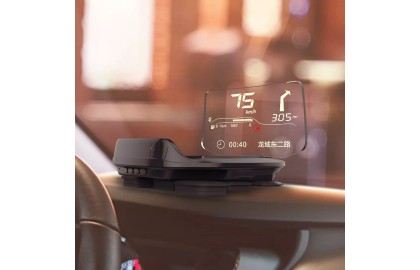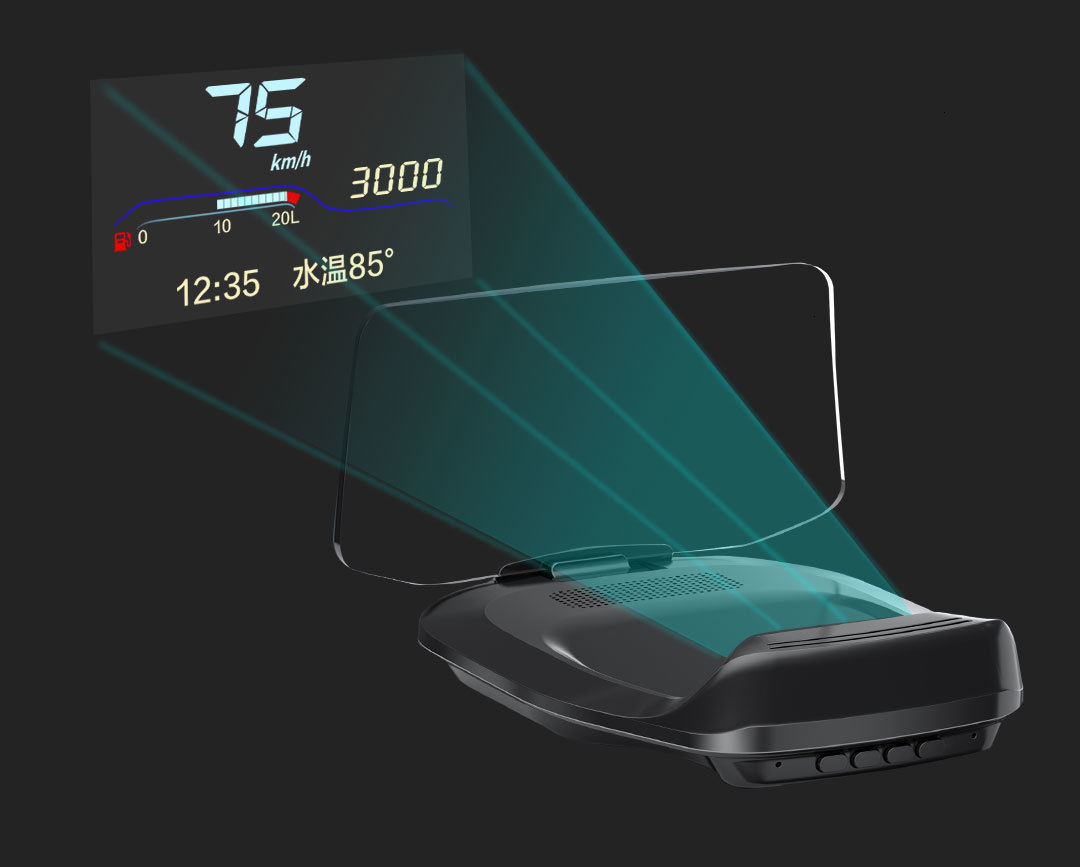Elecdeer Head-up Display System HUD: HUD System Overview


Elecdeer Head-up Display System HUD: HUD System Overview
1. Origin of HUD technology
The head-up display system HUD (Head-up display) is a technology evolved from the reflector sight, which was used in gun sights and fighter sights before World War II. After World War II, HUD technology began to be gradually applied to fighter jets. It can display speed, altitude, radar information, sights, etc. on the cockpit cover or transparent board of fighter jets. Pilots can see the important information they need without looking down.
In modern times, the HUD on fighter jets is gradually replaced by helmet-mounted displays (HMDS), including the F35 of the US military and the J20 of our army.
In the 1980s, General Motors acquired Hughes Aircraft, an aerospace and defense manufacturing company, and HUD technology began to appear in cars. In 1988, General Motors applied HUD to the Oldsmobile Cutlass Supreme Indy 500 Pace Car, which was the first car in the world to adopt HUD technology. The original automotive HUD systems displayed limited information and a single color.
Since then, the HUD system has gradually been equipped in sports cars and high-end cars, and its technology has begun to develop in the direction of informationization and digitization:
In 1991, Toyota installed a HUD on the Crown Majesta;
In 1997, GM installed a color display HUD for the first time on the fifth-generation model of its "Corvette" model;
In 2003, BMW became the first car company in Europe to use HUD technology, and Mercedes-Benz and Audi also began to use HUD technology.
In the early stage of the development of HUD technology, due to poor display effect and high cost, it has not been widely used, and it is even considered tasteless. Until 2020, the Mercedes-Benz S-Class released the AR-HUD (Augmented Reality Head-Up Display System), and the HUD once again received widespread attention. On Mercedes-Benz's AR-HUD system, AR (augmented reality) technology superimposes navigation information and actual road surface information, and the display of navigation information is more direct and easy to understand. In addition, AR-HUD combined with ADAS functions can provide real-time road hazard warnings and forecast road conditions to improve driving safety.
2. Significance of HUD technology
1. Improve driving safety
During normal driving, the human eye needs to switch back and forth between the road and the instrument, which can easily lead to visual fatigue and distraction. A study in the United States shows that assuming that the vehicle is traveling at a speed of 120km/h, if the driver's line of sight deviates from the road for more than 2 seconds, the vehicle will travel a distance of more than 65m.
The greatest significance of HUD technology is that it allows drivers to obtain a large amount of information without taking their eyes off the road: the driver needs to lower his head by 5°~10° to view the information on the HUD, and the driver needs to lower his head by 20°~ to view the instrument cluster. 25°.
2. Improve human-computer interaction experience
In addition to improving driving safety, HUD technology can further enhance the human-computer interaction experience. On the one hand, HUD can make the display of information such as vehicle conditions and intelligent driving more efficient; on the other hand, HUD can also greatly enhance the display effect of navigation, making two-dimensional navigation move towards real-world navigation.
With the continuous enhancement of people's awareness of driving safety and the continuous development of science and technology, the HUD system will continue to be popularized in low-end and mid-range cars, so that ordinary people can also enjoy the safety brought by technology.
3. Classification of HUD
There are three main types of automotive HUD: combined head-up display system C-HUD (Combiner-HUD), windshield type head-up display W-HUD (Windshield-HUD) and augmented reality head-up display system AR-HUD (Augmented Reality HUD).
1. C-HUD
C-HUD is more used in the aftermarket. It will install a translucent resin plate on the top of the instrument panel and the top of the instrument panel, and then use the resin plate as a projection medium to reflect a virtual image. The resin plate is usually specially treated according to the imaging conditions, such as being made into a wedge shape to avoid reflection ghosting and improve the display effect.
Compared with W-HUD and AR-HUD, C-HUD has lower cost, but has the following three disadvantages:
The imaging area is small and the display content is limited;
The imaging distance is short and the imaging height is low;
The layout position is on the dashboard in front of the driver, which may cause secondary injury to the driver in the event of a vehicle collision.
2. W-HUD
W-HUD is used for front-mounting. There are currently several technical routes: magnified imaging based on curved mirrors, magnified imaging based on holographic optical elements (HOE) and magnified imaging based on holographic optical waveguide (Waveguide). At present, the HOE and Waveguide technologies are not yet mature, and the main application is the magnification imaging technology based on curved mirrors.
W-HUD uses the front windshield as the imaging medium to reflect the imaging, which can support a larger imaging area and a longer projection distance. The disadvantage of W-HUD is that the windshield is usually a curved mirror, and W-HUD must adapt the high-precision curved mirror according to the size and curvature of the windshield, resulting in relatively high cost.
3. AR-HUD
Like W-HUD, AR-HUD uses the front windshield as an imaging medium to reflect imaging, but AR-HUD has a larger imaging area, longer projection distance, and more vivid imaging.
AR-HUD needs to analyze and model the road conditions ahead through intelligent driving sensors (camera, radar, etc.) to obtain the position, distance, size and other elements of the object, and then accurately project the information displayed by the HUD to the corresponding position. AR-HUD can highly integrate projected information with the traffic environment, such as lane line fitting during driving, front obstacle/dangerous object fitting, lane departure warning and lane line fitting, etc.
AR-HUD has excellent overall display effect and is an important part of smart driving and smart cockpit solutions.
Although the performance of AR-HUD is the best in all aspects, it is the largest in size and it is difficult to arrange it on the whole vehicle. At the same time, the current AR-HUD technology is not mature enough, and the display effect still needs to be improved.
